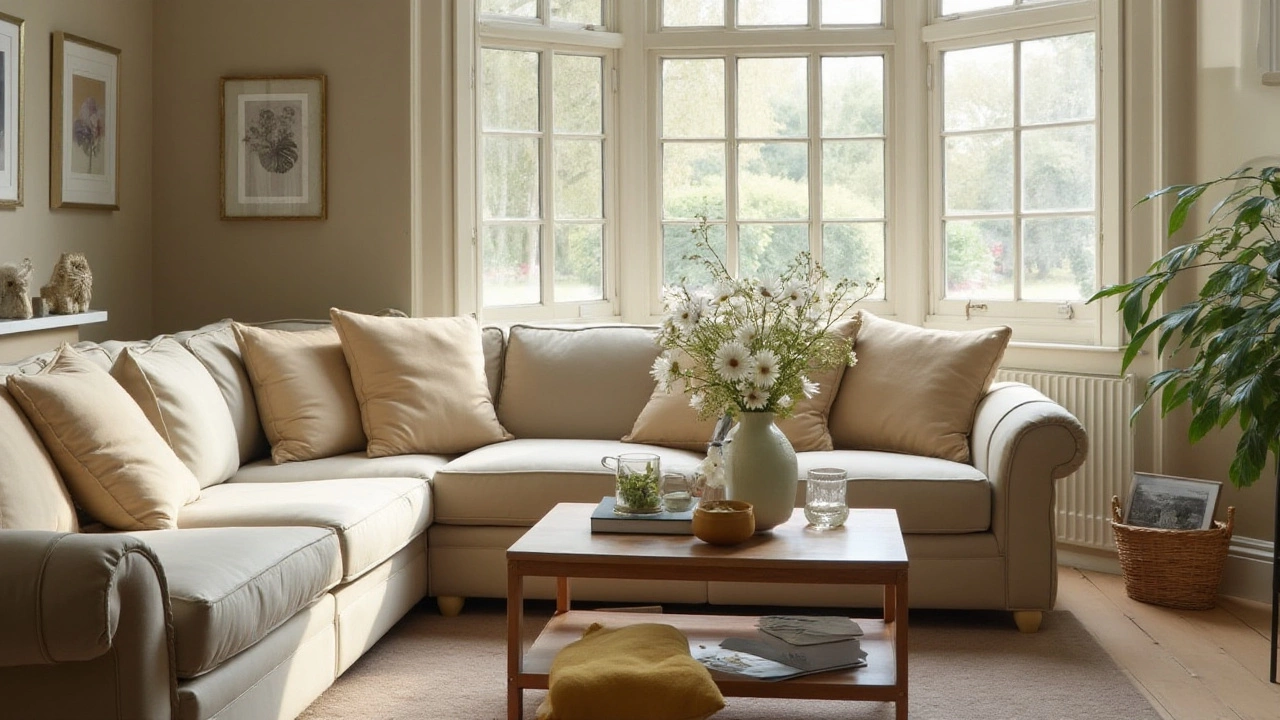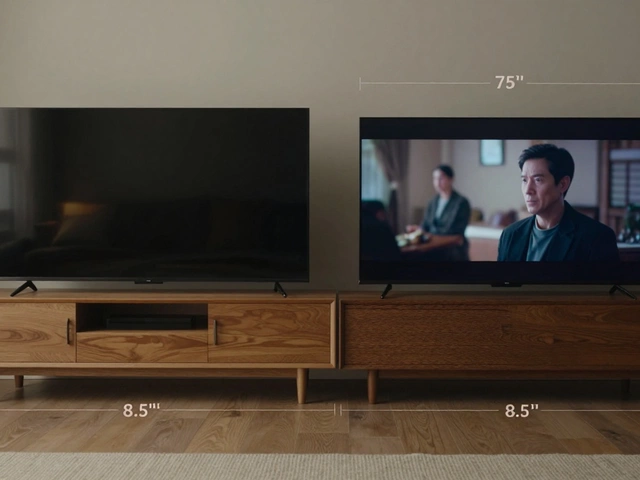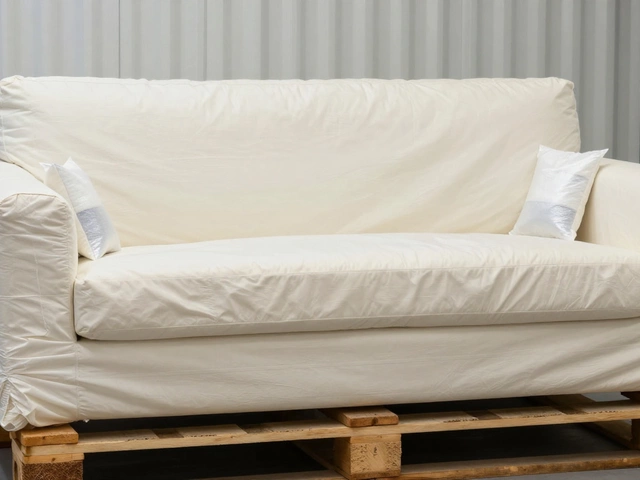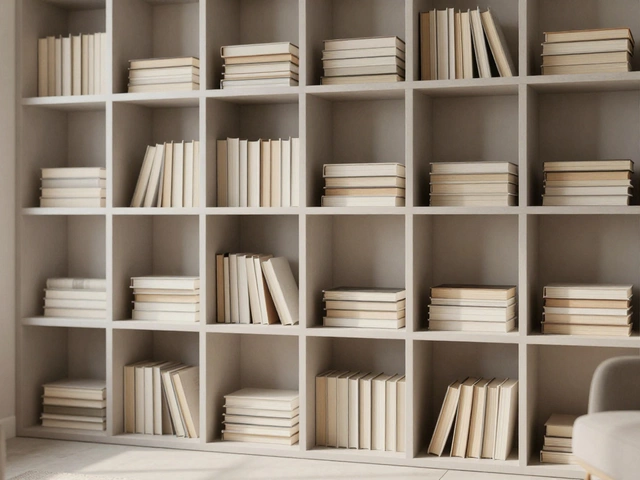The magic of interior design often lies within the small details, and the height of your coffee table compared to your couch is one of those pivotal elements. Though it might seem like a minor consideration, the mismatch between a coffee table and seating can disrupt the harmony and comfort of a living space. Whether you're setting the stage for an evening of relaxation or your next social gathering, choosing the right height can make all the difference.
Understanding why the height matters is as crucial as knowing how to measure it. A coffee table that's too high or too low can lead to an awkward experience, affecting ease of use and visual enjoyment. We're diving into the essential guidelines and creative insights to help you make the perfect choice, ensuring your living room isn't just a space, but a statement.
- Importance of Coffee Table Height
- Standard Measurements to Consider
- Design Variances & Styles
- Functional Tips for Choosing the Right Height
- Enhancing Room Aesthetics with Proper Pairing
Importance of Coffee Table Height
When it comes to creating a comfortable and visually appealing living room, the height of the coffee table is more essential than many might first think. The ideal height facilitates easy reach from the seating position, making it perfect for setting down drinks, books, or remote controls without unnecessary strain. In an era where home entertainment areas double up as workspaces for many, functionality paired with aesthetics becomes paramount. The golden rule often cited by interior decorators is for the coffee table to be around the same height as the cushions on your couch, or slightly lower, which typically falls between 16 to 18 inches off the ground. However, this isn't a one-size-fits-all solution and can vary depending on personal preferences and specific furniture styles.
Choosing the wrong height might lead to awkward accessibility issues. Imagine reaching down or awkwardly up every time you want to grab your cup of coffee! Not just convenience, but the visual symmetry of the room can also be thrown off if the table’s height is out of proportion to the couch. Taking a leaf from professional interior designers' books, the relationship between your couch and table can either make or break the impression of the space. In some cases, taller coffee tables up to 20 inches might be ideal for larger sofas, creating a sense of balance by contrasting with plush and voluminous couch cushions.
"A harmonious living space begins with finding balance, and that starts right at the level of your coffee table," says interior design expert Jane Abernathy. "It's not just about aesthetics; it's about creating a flow that makes life easier."
If you're investing in a new couch or rearranging the current setup, it's worth allocating time to consider the table height relative to the seating. Measurements help, but it's also valuable breaking away from the ruler and visually aligning these pieces in context. Many homeowners feel the urge to experiment a little with stacked books or temporary lifts, just to see how different heights feel over a week or two. This experimental approach may lead you to insights about your personal comfort that standard guidelines might miss.
In recent times, minimalist styles have brought lower tables into vogue, emphasizing openness and creating an illusion of more space. Designing your living room around these principles can drastically alter the feel and look of a small room. However, minimalist doesn’t mean compromising on comfort. With clever storage solutions and legroom planning, these tables do double duty being both functional and trendy. Analysing user experience is becoming an increasing trend in furniture design, and the prominence of fitting coffee tables to couches is a classic example of the user-centric approach taken by successful modern interiors.
Standard Measurements to Consider
In the quest for the best living space, understanding the ideal coffee table height in relation to your couch is crucial. The golden rule that many interior designers swear by is choosing a table that's within two to four inches of the height of your couch seat. This guideline ensures that the table feels like a natural extension of your seating area, making it both functional and aesthetically pleasing. So, if your couch seat is typically around 18 to 20 inches high, your ideal coffee table should fall within this range as well.
There's more than just numbers to consider when you’re deciding on the perfect height. The cultural expectations and design trends have evolved over time. Traditional standards often leaned towards lower tables, offering a more relaxed vibe. But recent trends, particularly in minimalist and modern aesthetics, push for a slightly higher table giving a sleek, accessible form. According to a quote by Sarah Sherman Samuel, a renowned interior designer,
"A coffee table at the right height bridges the gap between style and usability, making your living space both beautiful and functional."
When measuring your couch and potential coffee table, tools like a tape measure become your best friend. It's a simple method: measure from the floor to the top of the couch cushion and then translate that to your table selection. Consider the height of the arms of your couch too. When your table matches or nearly matches the arm height, it creates a streamlined look and practical surface that can hold drinks, reading materials, or decorative pieces with ease. Crafting this harmony involves an understanding of your own living habits - for those who often rest feet on the table, a lower option could work better, while those who treat the table strictly as an accessory might prefer it higher.
Knowing the dynamics between your couch and coffee table isn't just about functionality but also about capturing the eye's attention. If you're interested in ensuring that every piece in your living room seems like it was made to coexist, then these measurements are things you mustn’t overlook. The face value of a well-aligned setup doesn’t only add structure but tells a story of care and thought that's gone into tailoring your perfect haven. Take time and enjoy the process of selection, for the history of design shows that these small touches make lasting impressions.
In some aspects of interior design, rigid rules are replaced by guidelines that give room for personal style and taste. The essence of these living room design tips is to offer you a pathway that helps navigate through options to find what suits your lifestyle the best. Embrace the journey and make your living room a space where practicality meets personality.
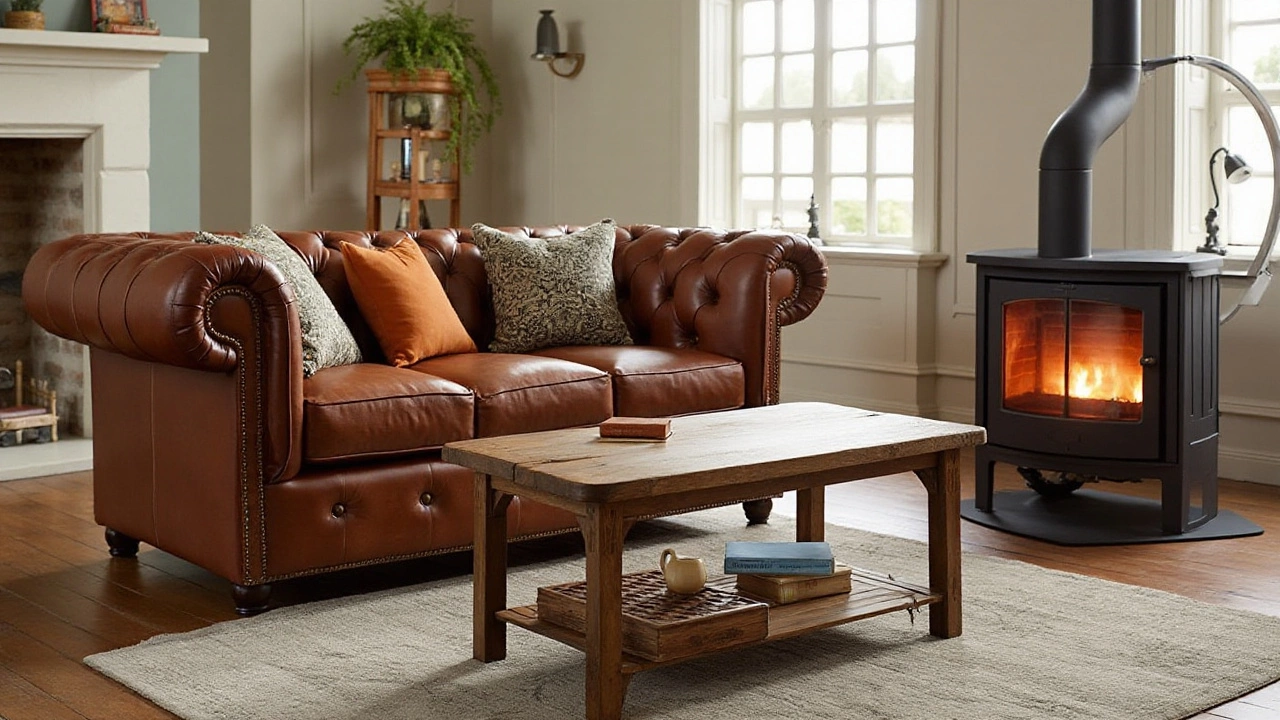
Design Variances & Styles
When it comes to crafting a cozy and stylish living room, the design of your coffee table can play a surprising role. Coffee tables are no longer just functional pieces; they are integral components of a room's aesthetic appeal. Today’s market offers a myriad of varieties that suit different themes, from minimalist to rustic. Recognizing the role of coffee table height can help you navigate these choices more effectively. Popular choices include mid-century modern styles characterized by low profiles, which naturally constrain the height, to more eclectic and vintage-inspired pieces where height might be variable but edges on the taller side. Additionally, glass top tables ensure transparency and create a sense of openness, while wooden tables tend to exude warmth and solidity. It's pivotal to align the table's design with the couch’s style to maintain visual cohesion.
Various design trends dictate the relationship between the couch and the table. For instance, Scandinavian designs emphasize simplicity and function, often pairing slimmer sofas with sleek, shorter tables. In contrast, traditional designs may encompass luxurious, raised tables that match the opulence of ornate couches. Understanding these styles aids homeowners in making an informed choice about the coffee table's design. It's important to find the balance between a coffee table that complements your living room's theme without overwhelming it. As interior designer Nate Berkus once said,
"Your home should tell the story of who you are, and be a collection of what you love."This advice encapsulates the essence of intertwining unique coffee table styles that resonate personally while aligning structurally.
A striking insight into design choices includes analyzing the needs of the space. If the coffee table is a multipurpose piece, possibly doubling as a storage unit or workspace, it must also support the right dimensions to serve multiple functions without sacrificing ease of access or visual appeal. Higher coffee tables might be beneficial if you often find yourself working from the couch, whereas lower, sprawling designs can cater well to relaxed lounging environments. Table styling can include elements like layered textures, from plush topped fabric tables to the industrial allure of metal and concrete constructs. There's an interesting study reinforcing that people subconsciously align the height of tables with their principal use, hinting at the psychology behind design preferences.
When aiming for precision, it's helpful to consider some general standards that have been established in modern interior design. This includes establishing the proper height ratio to the couch seat, usually aiming for between one to two inches below the seat’s height. Such a principle creates an effortless flow and a level surface for placing items or resting feet. Exploring these living room design Blueprints, homeowners can craft an area that invites seamless integration of pieces, ensuring neither the couch nor the coffee table feels like an outlier.
For a deeper dive into precision, let's introduce some quantitative data. According to a recent survey conducted by Home Design magazine, approximately 60% of people prefer coffee tables that dip slightly below the couch seat, optimizing for comfort and convenience. This idea helps clarify the somewhat delicate interplay between aesthetics and utility. A well-curated space ultimately combines personal taste with a community understanding of spatial harmony, transforming the table into a centerpiece of interaction or a subtle supporter of ensemble decor.
Functional Tips for Choosing the Right Height
There's a fine art to selecting the ideal coffee table height for your living room, a decision that weaves together form and function. First and foremost, you need to consider the height of your couch, as this will be the guiding measure for your choice. Experts suggest that the coffee table height should be either the same height as the couch cushions or a few inches lower. This helps create an intuitive space where you can rest items comfortably and reach over without awkwardly adjusting your posture. Comfort, after all, is key when designing a space meant for relaxation and socialization.
Beyond mere aesthetics, the correct height directly impacts usability. For instance, if you're used to dining casually or working from your coffee table, a higher table might be more practical. Contrarily, if your coffee table is mainly a decorative piece, something lower could complement a sleek, modern look. Consider the primary purpose of your table—whether it’s to hold coffee mugs, remote controls, or art books—and let this dictate your decision. This is particularly vital in high-traffic homes where multifunctionality reigns supreme.
Moreover, bear in mind that your coffee table should promote easy movement in and around your seating area. Allow room for legs to extend comfortably without knocking over drinks. Position your table around 12 to 18 inches away from your couch to maintain a spacious feel, providing enough walking room yet keeping items within arm's reach. This setup guarantees a seamless interaction between guests and their use of the table, embodying both style and utility.
To provide another layer of insight, the recognized interior designer Nate Berkus once noted, "Your home should tell the story of who you are, and be a collection of what you love."
Infusing personal style into your height choice melds functionality with personal expression, reinforcing how spaces should feel as good as they look.A thoughtful examination of how you live in, and interact with, your living room leads to a cohesive, functional, and personalized outcome.
When shopping, tools like tape measures or adjustable-height tables can aid in making an accurate decision. New trends may even offer tables with adjustable heights, showcasing technology's presence in home decor. Practically, allowing a margin of error by keeping your decor flexible can accommodate shifts in tastes and lifestyle, especially in dynamic family environments. Balancing trends with time-honored practical advice ensures an adaptable living space that doesn't sacrifice comfort over style.
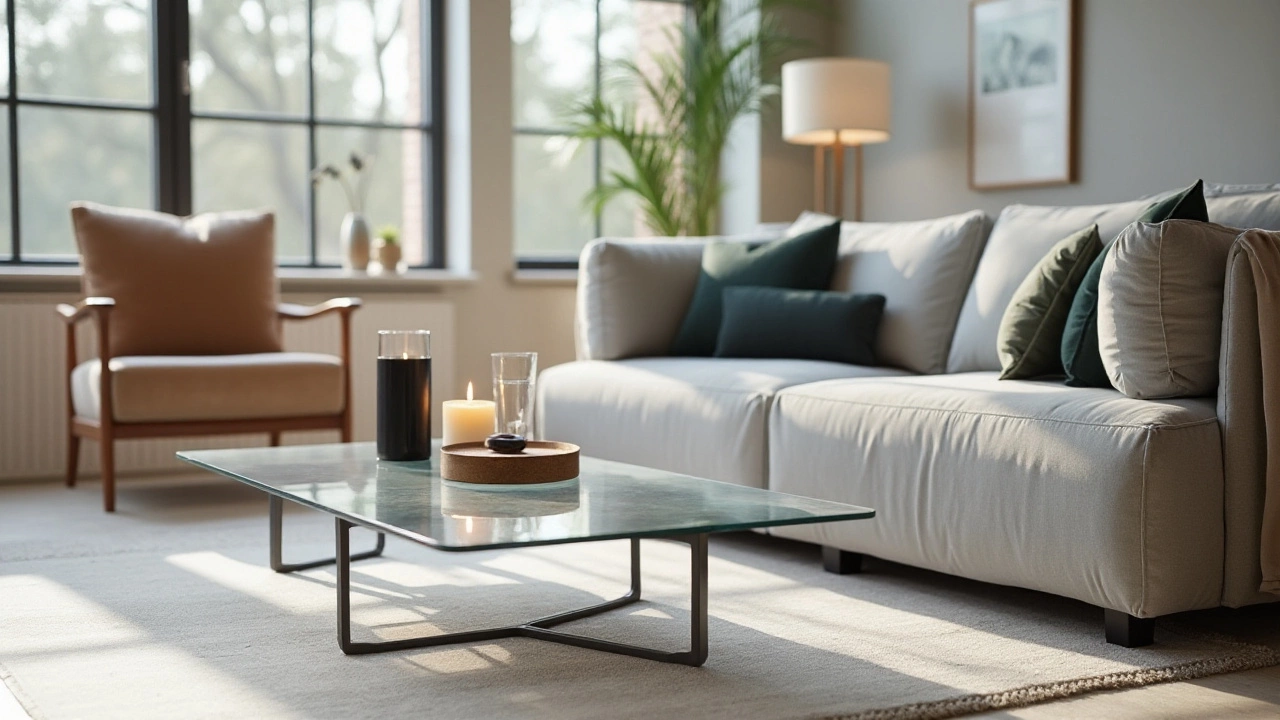
Enhancing Room Aesthetics with Proper Pairing
When it comes to tying together a living room, the right alignment between a coffee table height and couch can be a game-changer. The visual harmony of these two pieces working seamlessly together transforms a simple lounge area into a cohesive and inviting space. To begin with, understanding the aesthetic flow means paying attention to the proportions and balance that your coffee table brings into the room. The correct height usually means having the table level with, or slightly below, the seat cushions of the couch. This evenly matched elevation helps create a visual symmetry that feels both intentional and natural.
Consider the materials and colors in play. A glass-top table can add a touch of elegance without overwhelming the space, while darker wood finishes lend warmth and depth, especially when paired with a richly hued couch. Always aim for contrast or complement within the color spectrum of your living room. An underrated trick is creating layers with oversized coffee table books, subtly emphasizing the design elements of both table and couch.
Design experts often emphasize the importance of scale in living room arrangements. As interior designer Nate Berkus once noted,
"Design is nothing without a sense of balance and symmetry. A coffee table should never feel like an afterthought or cause a jarring note in what should be a harmonious conversation."Keeping this in mind, you want to ensure your coffee table compliments—rather than competes—with your couch. Think about how the geometry of your couch lines up with that of your table. Rectangular tables generally accommodate traditional or sectional couches beautifully, while round tables might best serve a smaller, more intimate space.
Lighting plays a key role too. The same coffee table can dramatically change ambiance based on the lighting cast over it. Ambient, dim directional lighting can soften the edges and make your living room design appear more cohesive, casting warm pools of light that highlight the arrangement's best features.
Another potential approach is employing mixed heights to add an intriguing visual dynamic. For instance, pairing a medium height coffee table with a set of low cushioned chairs can bring both variation and charm, making the living room not just a part of your home, but a feature in itself. In a more playful setup, multiple smaller tables scattered at different heights may echo the varied forms and textures within the sofa's fabric or upholstery.
In living room design, these aesthetic choices are more than just style—they speak to your taste and sensibility. To bring in mechanical structure to this artistry, consider the '2:3 principle,' where the coffee table's proportions aim to roughly fill two-thirds of the couch's length. This basic rule of thumb often results in a balanced visual without overwhelming or underwhelming the space.
Thus, while the importance of a coffee table height matching to the couch is essential, the variety in shapes, forms, and additional decor elements can take your living room from aesthetically pleasing to absolutely breathtaking, all while ensuring the space remains functional and welcoming for everyone.

